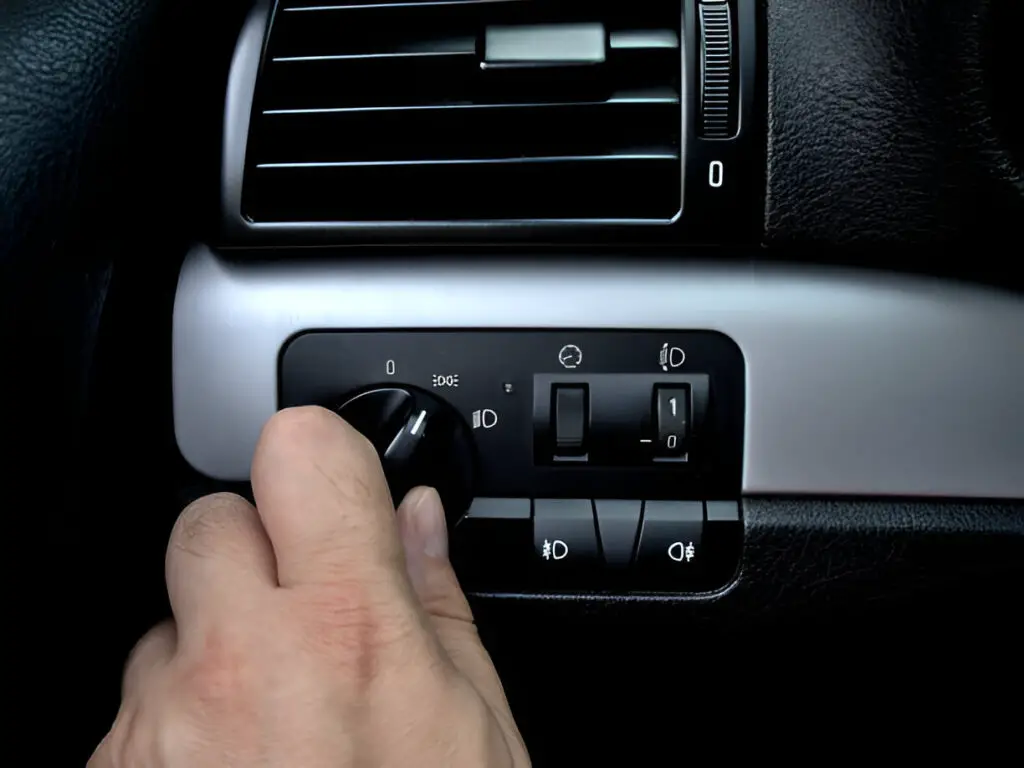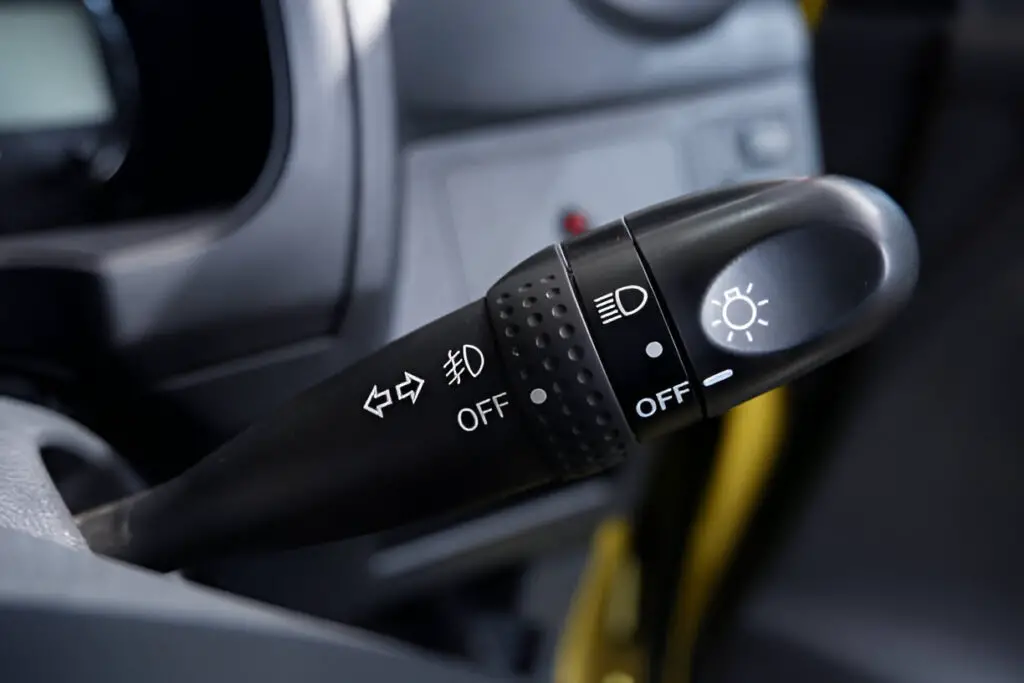If your headlight switch isn’t working, it could be due to several issues such as a blown fuse, faulty bulbs, or wiring problems. The switch itself may be worn out, or there could be a relay failure affecting the headlights. Start by checking the bulbs, fuses, and relays, and if necessary, replace the headlight switch to restore proper function.
Headlights are one of the most critical components of the vehicle’s safety system, providing visibility during night driving or poor weather conditions. When the headlight switch stops working, it can create serious driving hazards. If your headlight switch isn’t working properly, it could stem from a variety of causes—ranging from simple issues like a blown fuse to more complex electrical problems.
This blog post will cover everything you need to know about why your headlight switch might not be working, how to troubleshoot the issue, and ways to prevent future problems.

Contents
What Does the Headlight Switch Do?
The headlight switch controls the operation of your vehicle’s headlights. In most cars, it allows the driver to toggle between different modes, such as:
- Off: When the headlights are completely turned off.
- Parking Lights: Turns on the smaller exterior lights, which are usually located near the headlights.
- Low Beam: The standard headlights used for regular nighttime driving.
- High Beam: Brighter headlights used for poorly lit roads or areas with no street lights.
- Auto Mode: Automatically turns the headlights on or off based on ambient lighting conditions (available in newer vehicles).
When your headlight switch malfunctions, any or all of these functions may stop working, creating a potentially dangerous situation for you and other drivers on the road.
Causes Headlight Switch Not Working
Several factors can cause a malfunctioning headlight switch. Here are the most common causes:
1. Blown Fuses
Fuses are protective components that prevent electrical circuits from overloading. If a fuse related to the headlights is blown, it will disrupt the power flow to the headlights and make it seem like the switch isn’t working.
Symptoms: Both headlights stop working at the same time. Other electrical issues may also occur if other fuses are affected.
Solution: Check your vehicle’s fuse box and look for any blown fuses. Replace the damaged fuses with new ones of the same amperage.
2. Faulty Headlight Bulbs
It may seem obvious, but sometimes the headlight switch isn’t the issue—it’s the bulbs themselves. Over time, headlight bulbs burn out, and you may mistake this for a switch problem.
Symptoms: One or both headlights won’t turn on, even if the switch seems to be functioning correctly.
Solution: Inspect the bulbs to see if they are burned out. If so, replace headlight bulb with the correct type of bulbs specified for your vehicle.
3. Wiring Problems
The wiring that connects the headlight switch to the lights can become damaged over time due to wear and tear, heat, or moisture. Faulty wiring can disrupt the electrical current needed to operate the lights.
Symptoms: Flickering headlights, lights turning on or off intermittently, or no response from the switch.
Solution: If you suspect wiring issues, you may need a professional to inspect the electrical system. Damaged wires or connectors will need to be repaired or replaced.
4. Faulty Headlight Switch
The headlight switch itself can become worn out or damaged, especially in older vehicles. When the internal components of the switch degrade, it can fail to send the signal to turn the lights on.
Symptoms: The switch feels loose, doesn’t click into place, or fails to respond when toggled between modes.
Solution: Replacing the headlight switch is often the best course of action. This can usually be done by a mechanic, but you may be able to replace it yourself if you have some experience with car repairs.
5. Relay Failure
A relay is an electrical component that helps control the flow of electricity to your headlights. If the relay for your headlights fails, the headlights may not receive enough power to turn on.
Symptoms: One or both headlights fail to illuminate, and the headlight switch works intermittently.
Solution: The faulty relay will need to be identified and replaced.
6. Faulty Dimmer Switch
The dimmer switch controls the brightness of your headlights, particularly for toggling between high and low beams. If this switch is damaged, it can affect your ability to use the high beams or may prevent the headlights from turning on altogether.
Symptoms: High beams fail to work, or the switch doesn’t toggle between modes properly.
Solution: Replacing the dimmer switch should fix the issue.
7. Corroded Connections
Over time, the electrical connections in your vehicle’s lighting system can become corroded due to exposure to moisture and road salt. Corrosion can create resistance in the circuit, preventing the headlights from working correctly.
Symptoms: Flickering lights, delayed response from the switch, or headlights not turning on at all.
Solution: Clean the corroded connections with an appropriate electrical cleaner. In severe cases, you may need to replace the connectors.

How to Troubleshoot a Malfunctioning Headlight Switch
If your headlight switch isn’t working, follow these steps to troubleshoot the issue before heading to a mechanic:
- Check the Headlight Bulbs: Start by inspecting the bulbs. If both headlights aren’t working, it’s unlikely that both bulbs burned out simultaneously, but it’s still a good first step.
- If one or both bulbs are burned out, replace them and check if the switch works afterward.
- Test the Fuses: Use your vehicle’s manual to locate the fuse box. Identify the headlight-related fuses and check them for any signs of damage or burning.
- Replace any blown fuses and test the switch again.
- Inspect the Relay: If the bulbs and fuses are fine, the next step is to check the headlight relay. Look for the relay labeled for headlights and test it or swap it with a working relay from another system to see if the headlights start working.
- Check the Wiring: Look for visible damage to the wiring connected to the headlight switch or headlights. If you find any frayed or broken wires, it’s a good indication that wiring is the issue.
- Test the Switch: If none of the above fixes the issue, the problem may be with the headlight switch itself. You can test the switch using a multimeter to see if it’s sending the correct signals when toggled. If it’s faulty, replacing the switch should solve the problem.
Preventing Headlight Switch Problems
While it’s impossible to completely prevent electrical problems, there are steps you can take to minimize the risk of your headlight switch malfunctioning:
- Regular Inspections: Periodically check your headlights, fuses, and electrical connections for signs of wear or damage. Catching small issues early can prevent more significant problems down the road.
- Protect from Moisture: Try to keep the areas around your headlights and headlight switch as dry as possible to prevent corrosion. If you frequently drive in wet or salty conditions, clean the electrical connections more often.
- Use High-Quality Bulbs: Low-quality or incorrect bulbs can cause electrical strain on your headlight system, which can eventually lead to issues with the switch or other components.
- Avoid Overloading the Electrical System: Installing too many aftermarket accessories that draw power from your vehicle’s electrical system can put unnecessary strain on the circuits, increasing the risk of headlight switch failure.
- Replace Old Components: If your car is older, some electrical components may be nearing the end of their lifespan. Proactively replacing aging parts like the headlight switch, dimmer switch, or relays can help you avoid sudden failures.
Frequently Asked Questions
Here are some FAQs about the headlight switch problems –
1. What are the symptoms of a faulty headlight switch?
A faulty headlight switch may cause the headlights to stop working, flicker, or fail to toggle between high and low beams. You might also notice that the switch feels loose or unresponsive when you attempt to operate it.
2. Can I drive with a broken headlight switch?
Driving with a malfunctioning headlight switch is dangerous and illegal in most areas. If your headlights aren’t working, you should avoid driving at night or in low-visibility conditions until the issue is resolved.
3. How much does it cost to replace a headlight switch?
The cost to replace a headlight switch can vary depending on your vehicle make and model, but on average, it ranges between $100 and $250 for parts and labor. DIY replacement can be more affordable if you’re comfortable working on your car.
4. Why do my headlights only work sometimes?
Intermittent headlight function can indicate a problem with the wiring, a faulty relay, or a loose connection. It may also be a sign that the headlight switch is beginning to fail.
5. How long do headlight switches last?
Headlight switches can last many years, often for the lifetime of the vehicle. However, like any electrical component, they can wear out over time due to frequent use or exposure to moisture and heat.
Conclusion
When your headlight switch isn’t working, it’s crucial to address the issue quickly to ensure your safety on the road. By understanding the potential causes and how to troubleshoot them, you can avoid costly repairs and keep your vehicle’s lighting system in top condition. Whether it’s a simple fuse replacement or a more complex wiring problem, identifying the cause early can help prevent further issues.